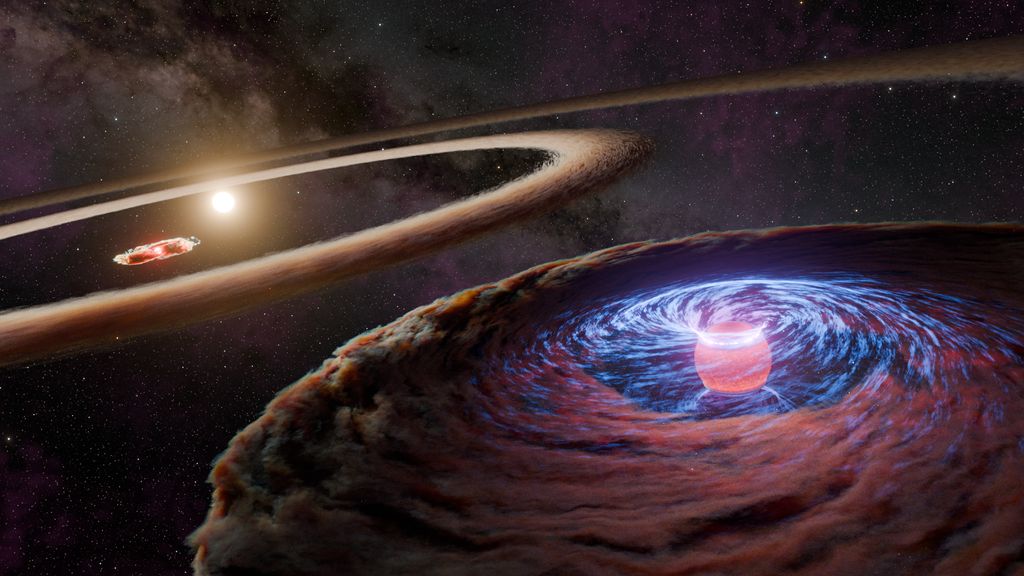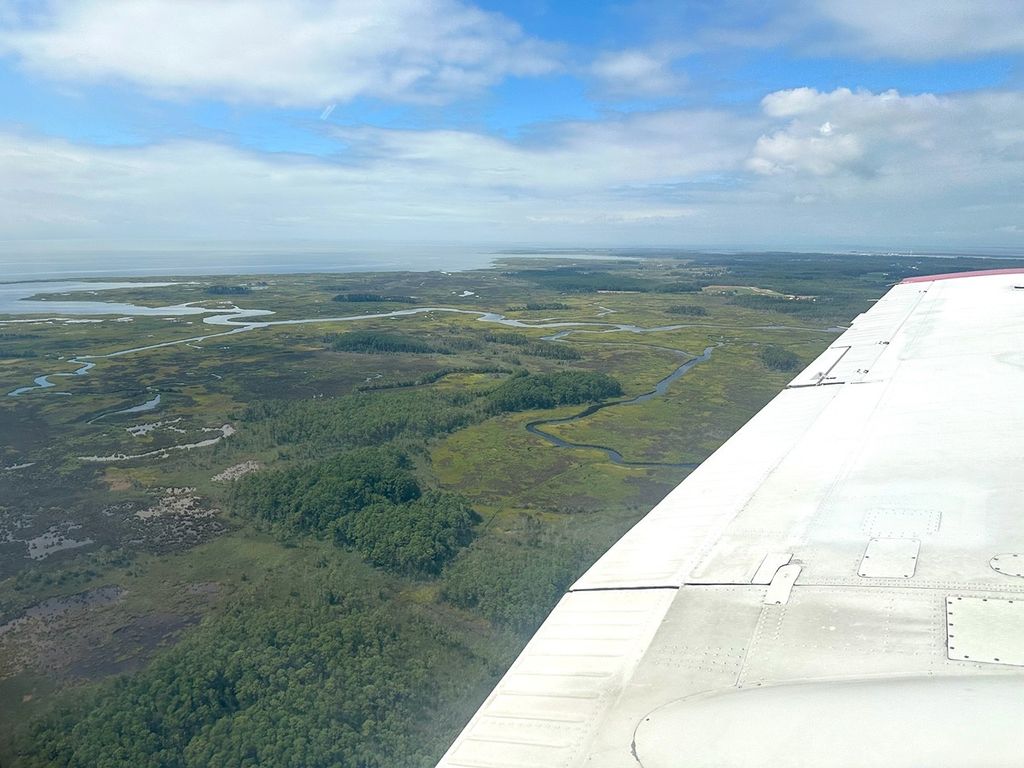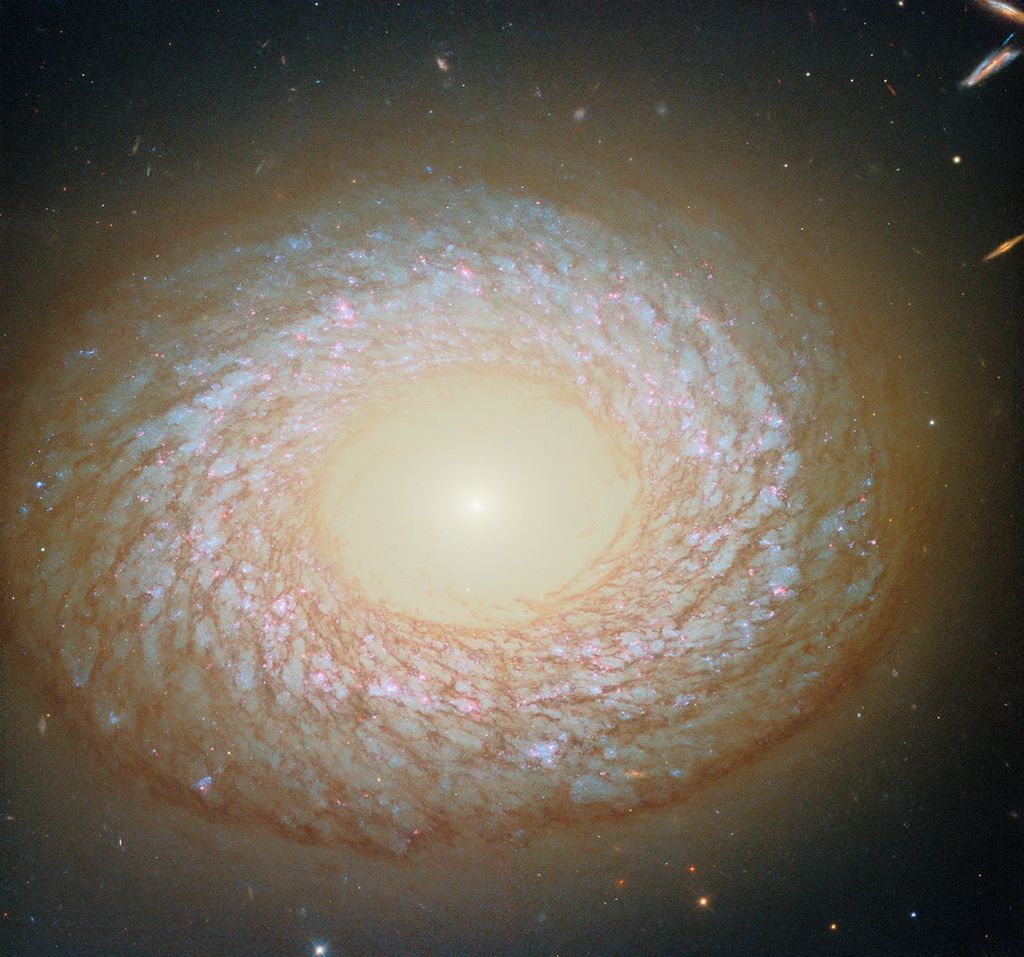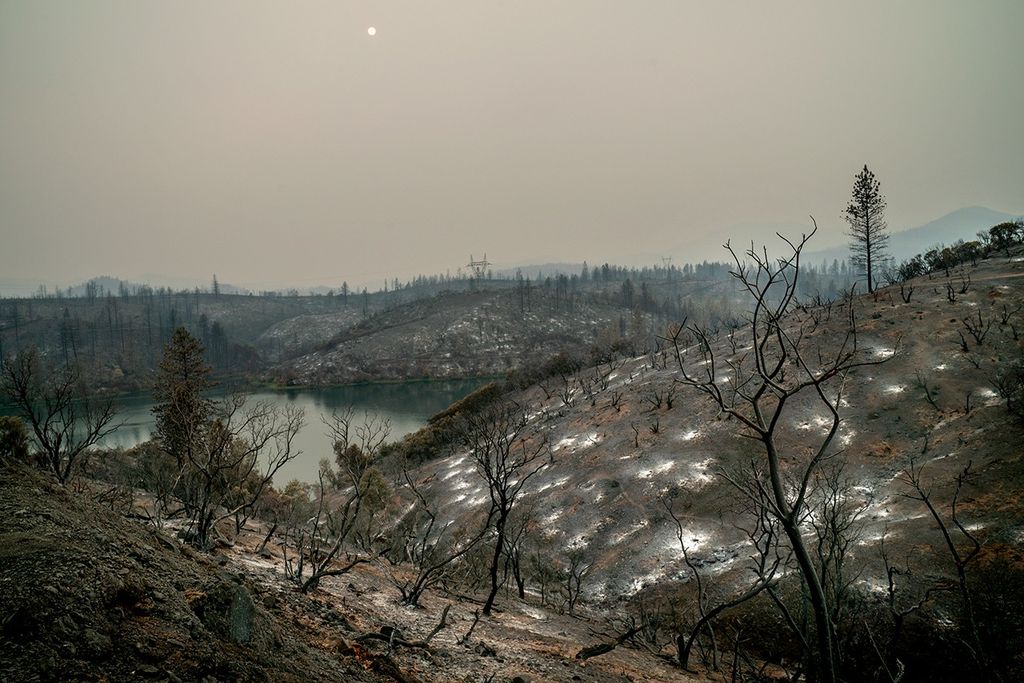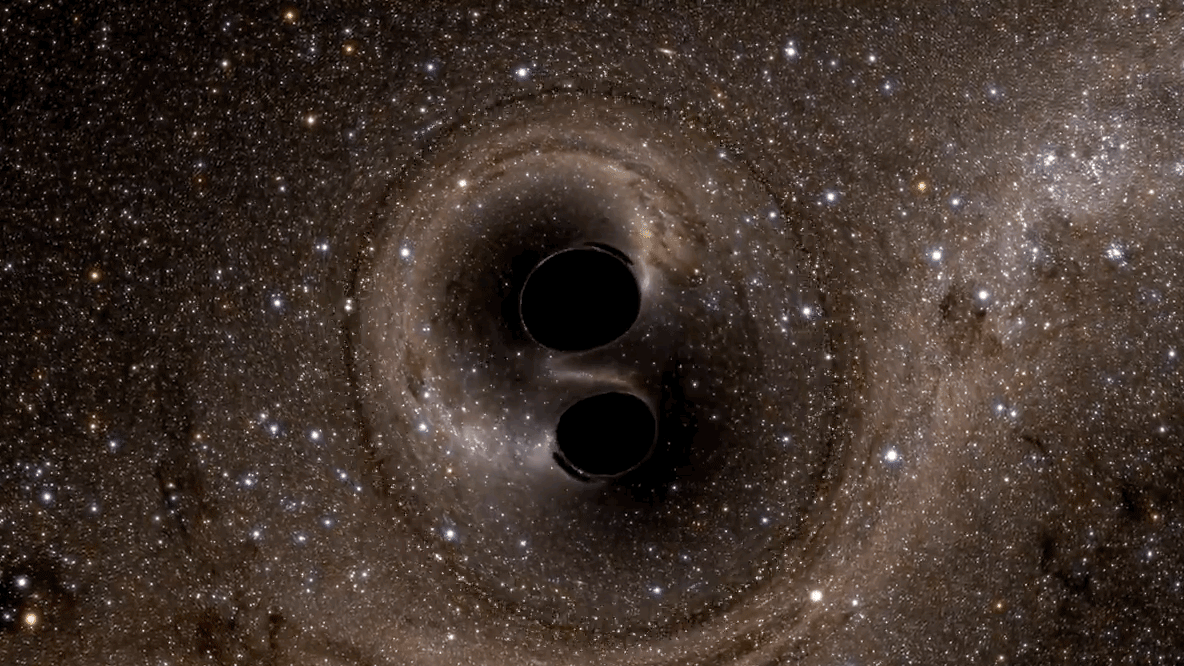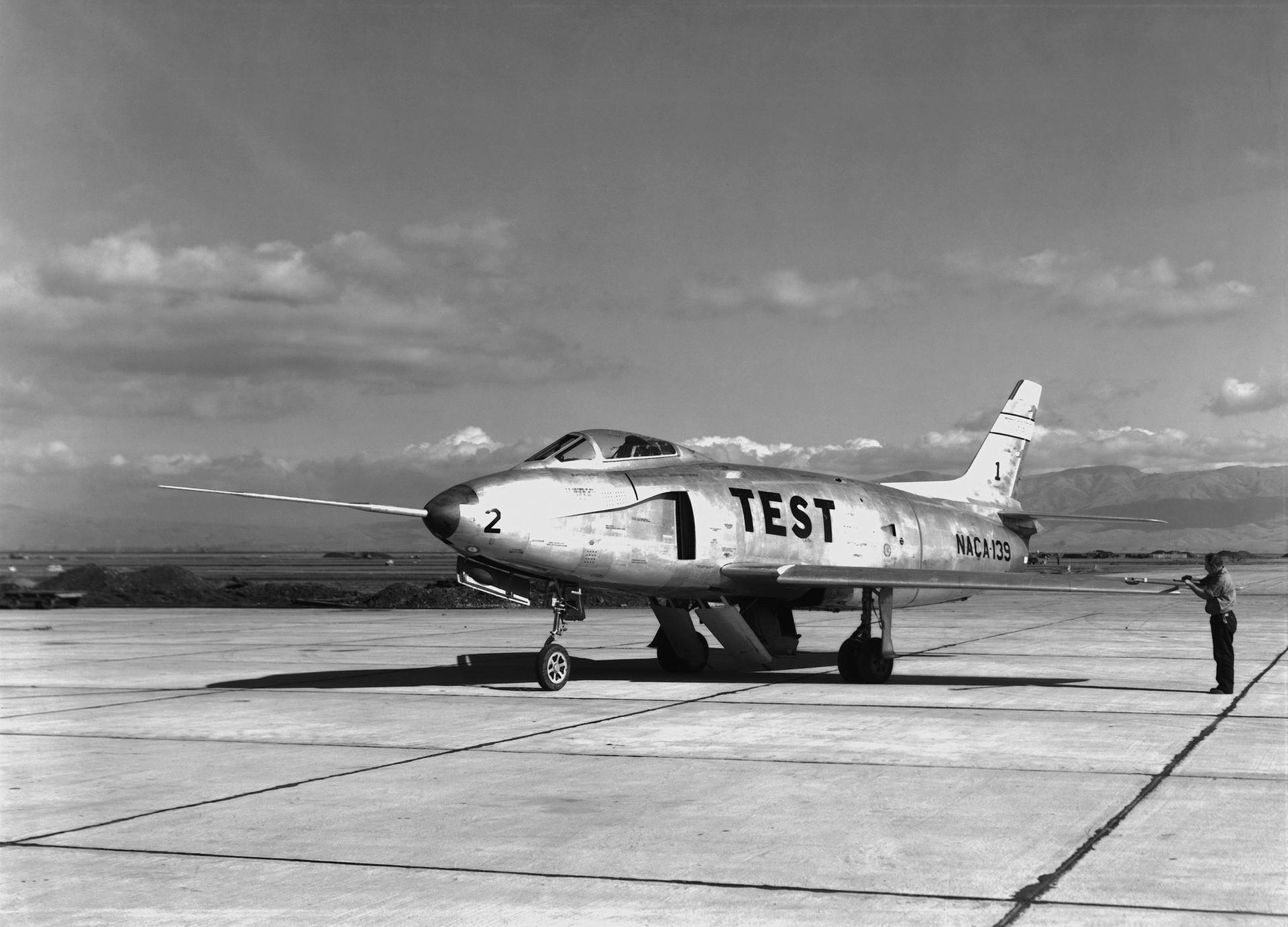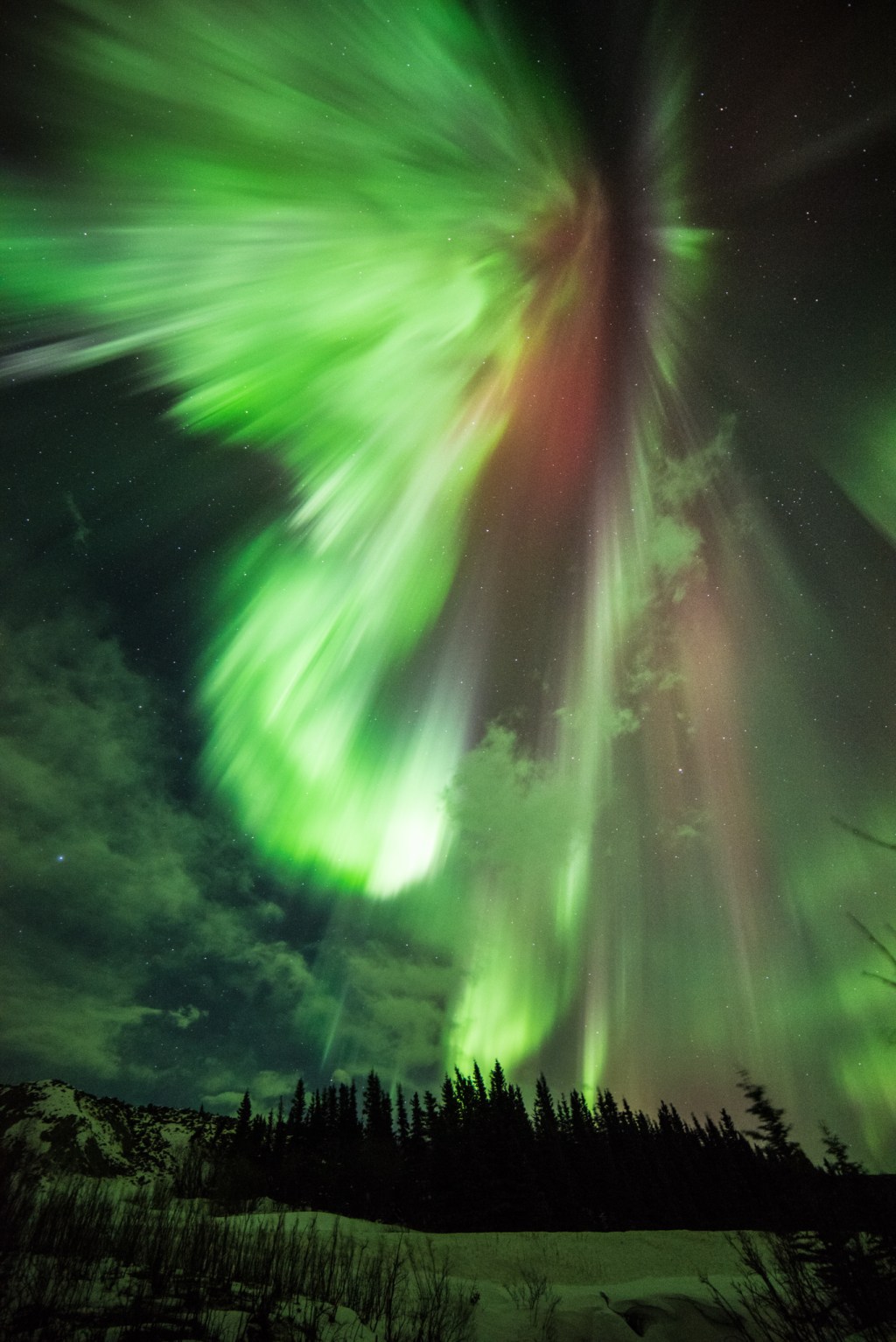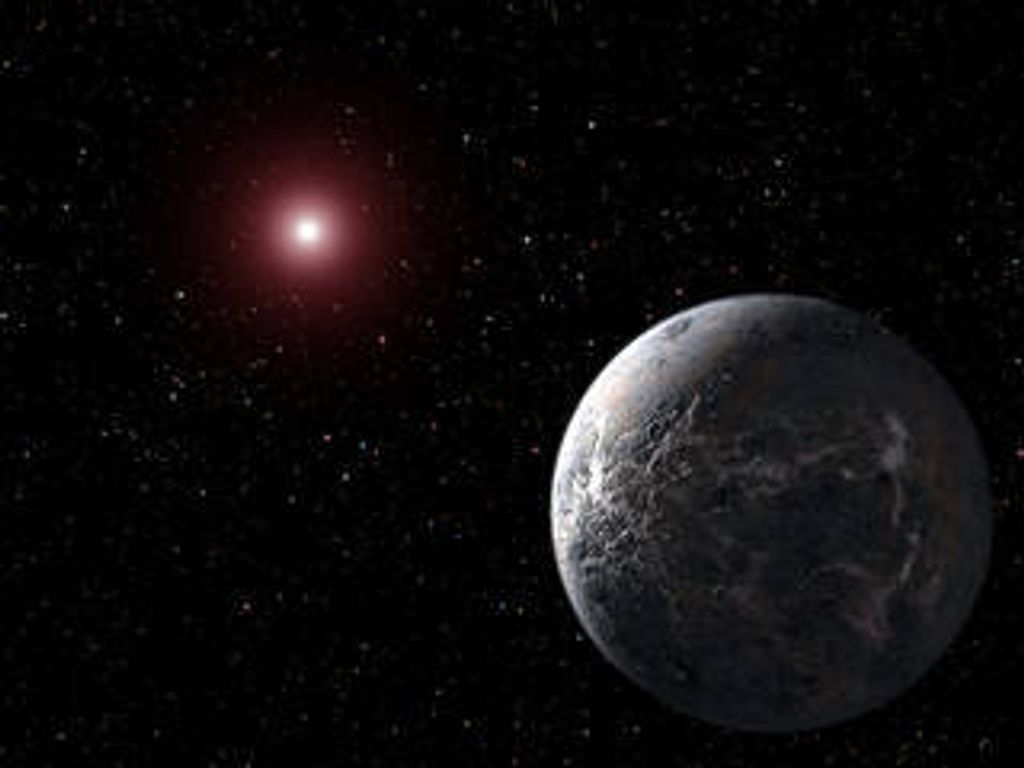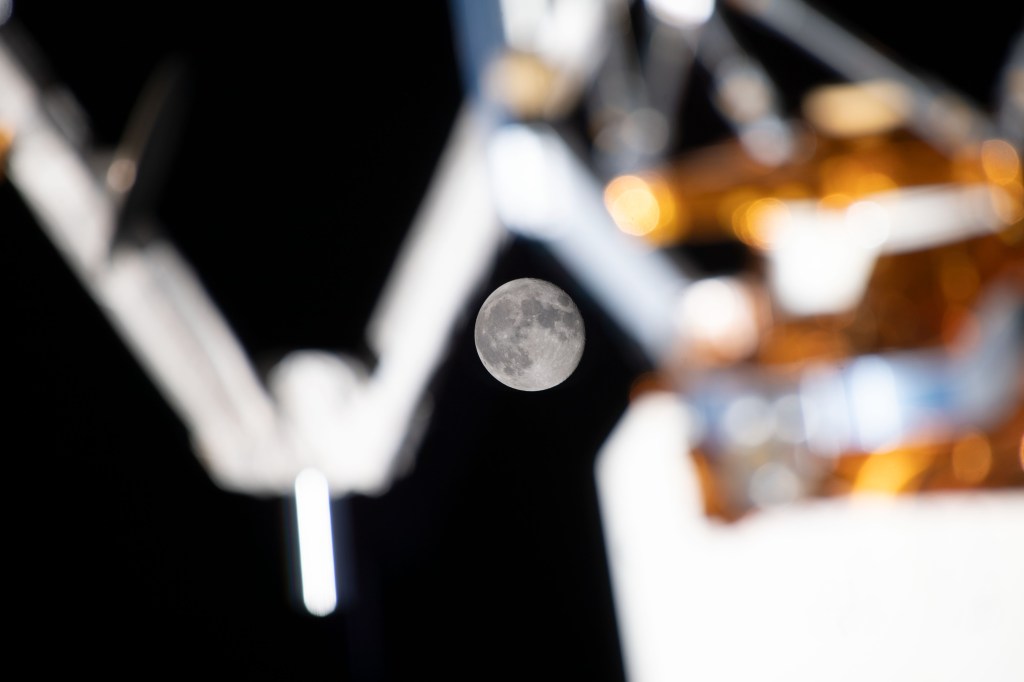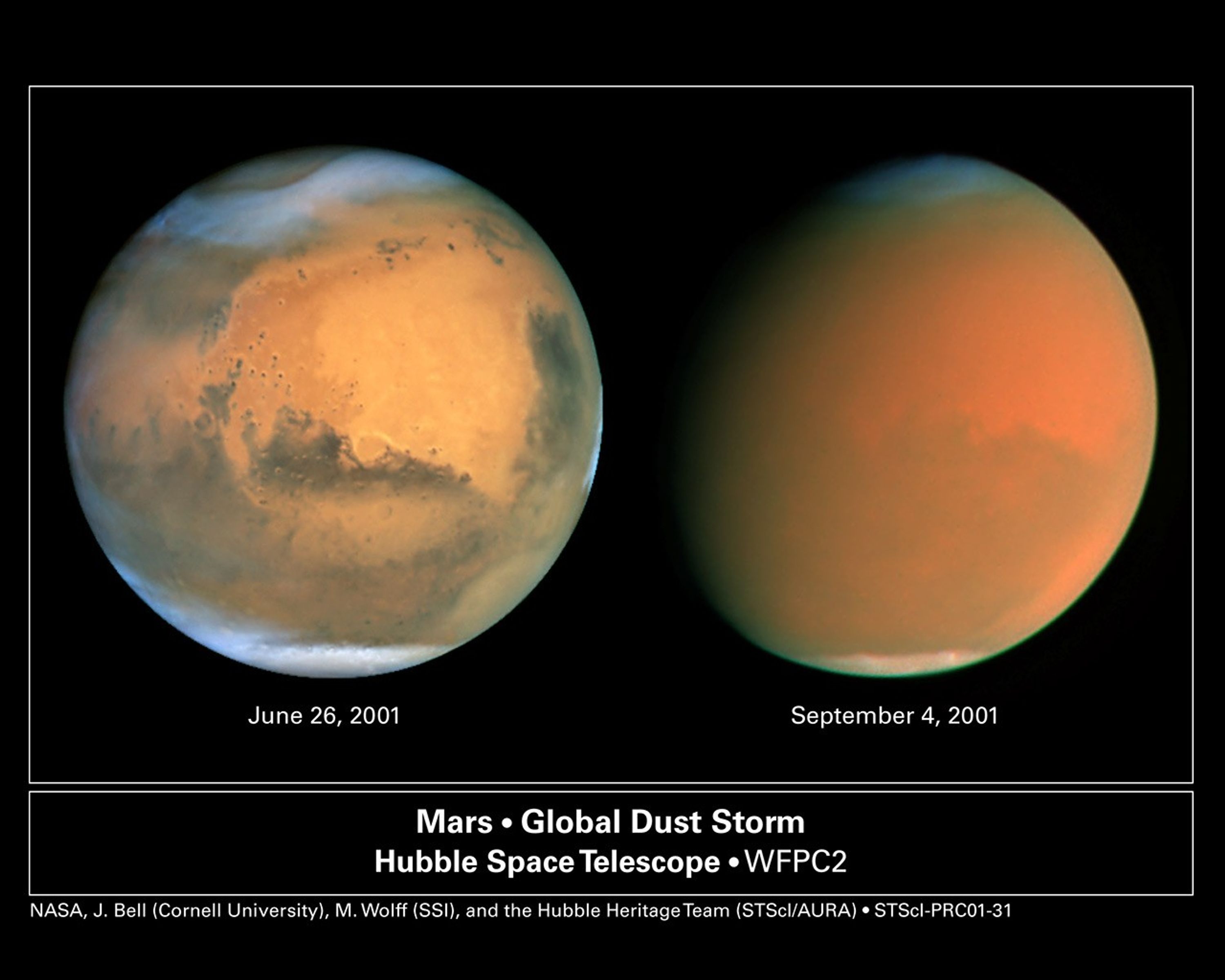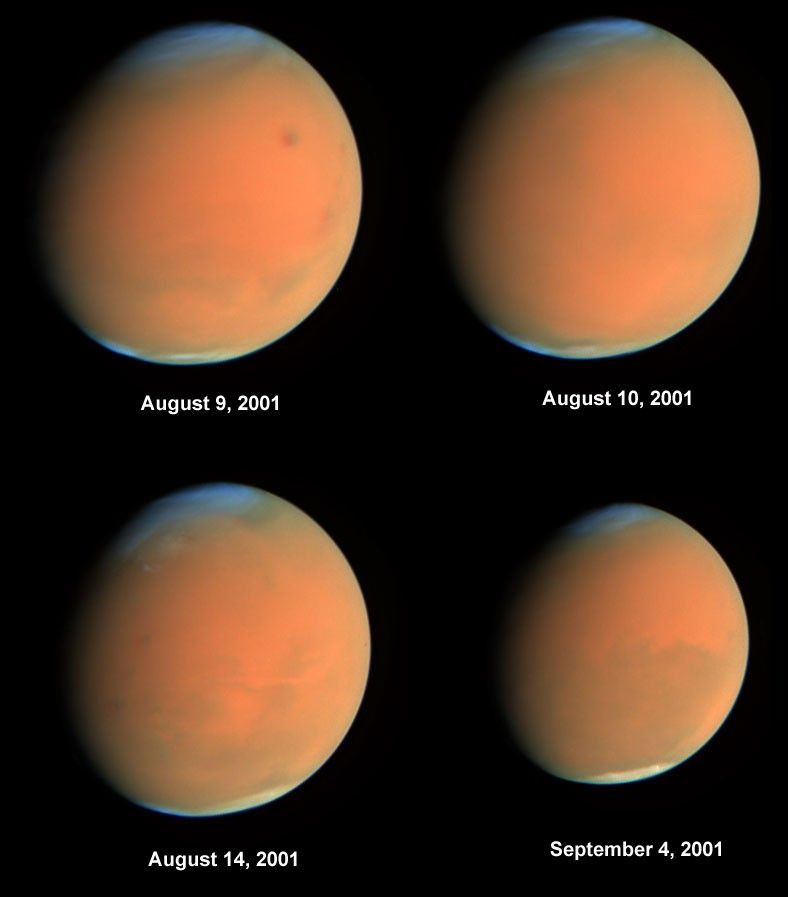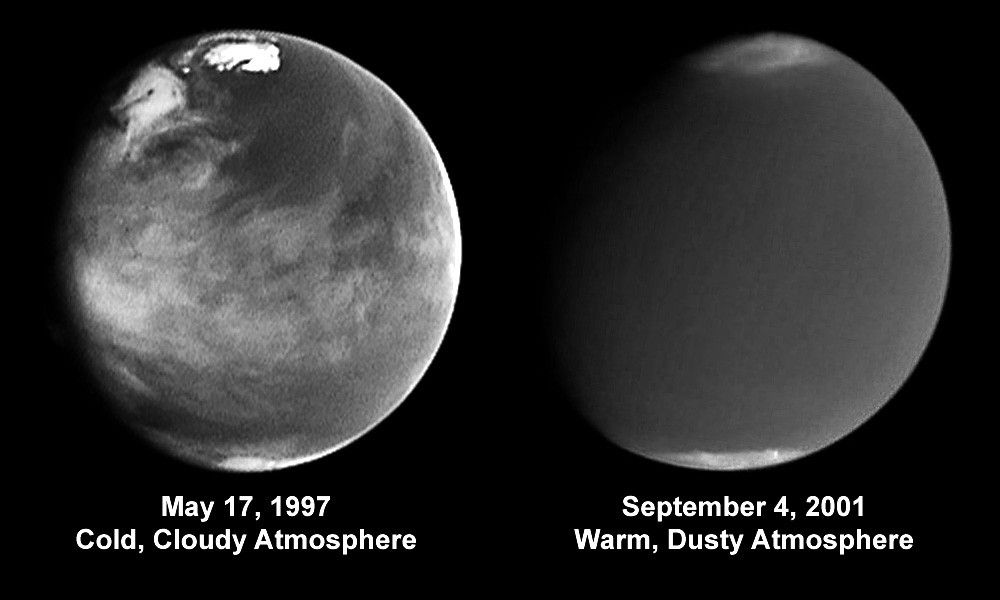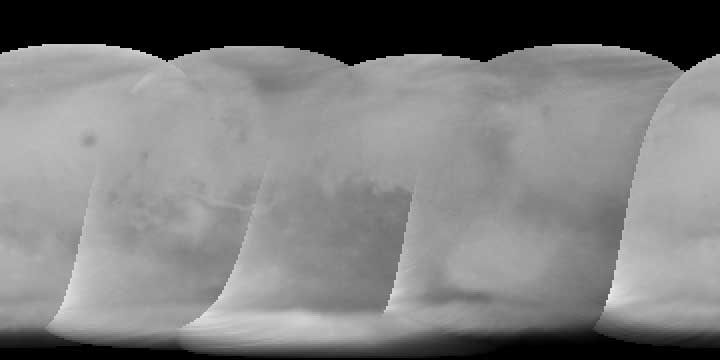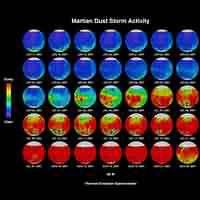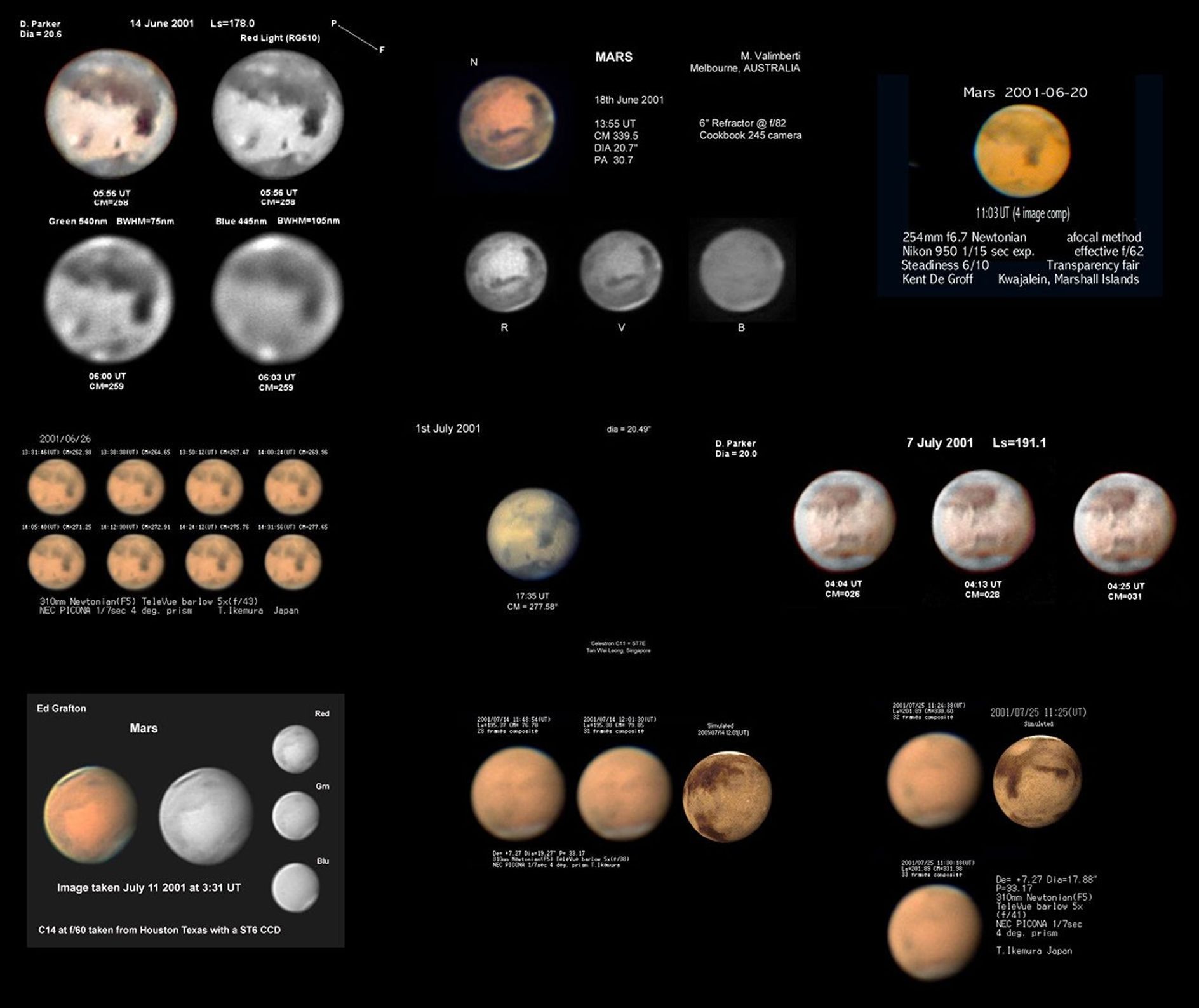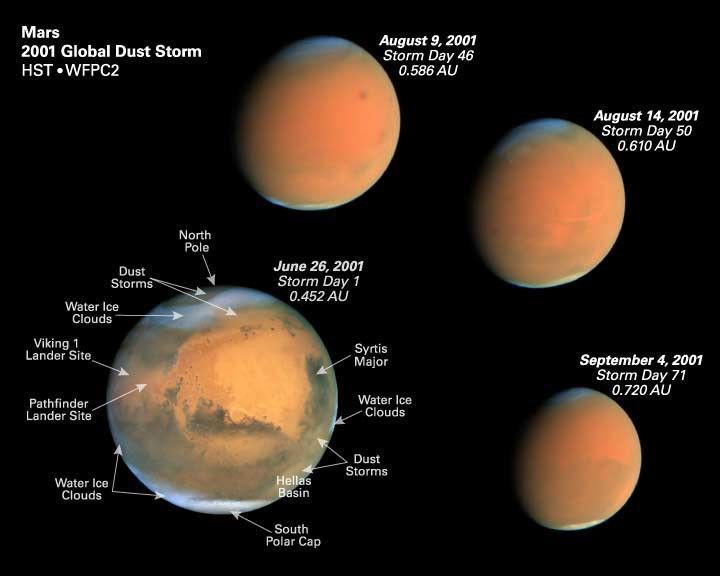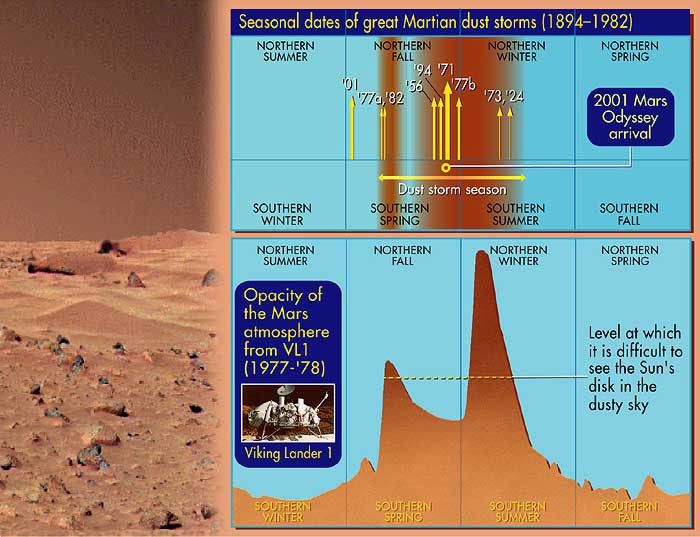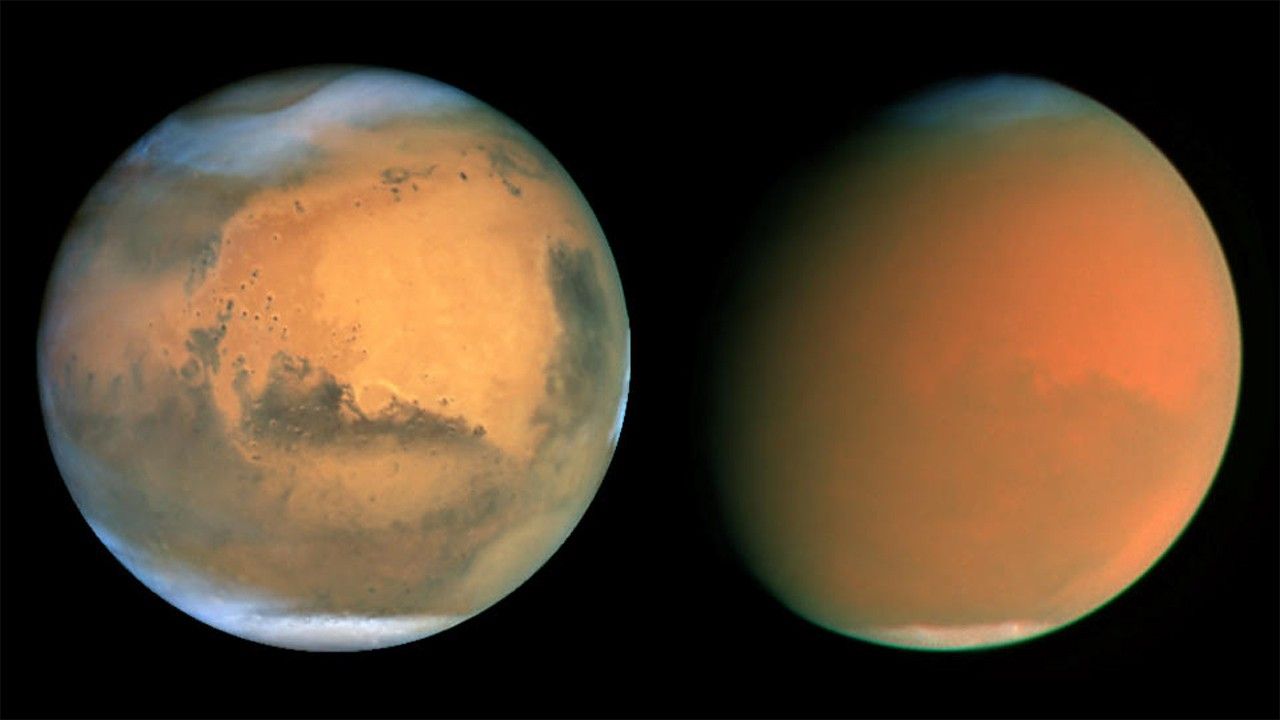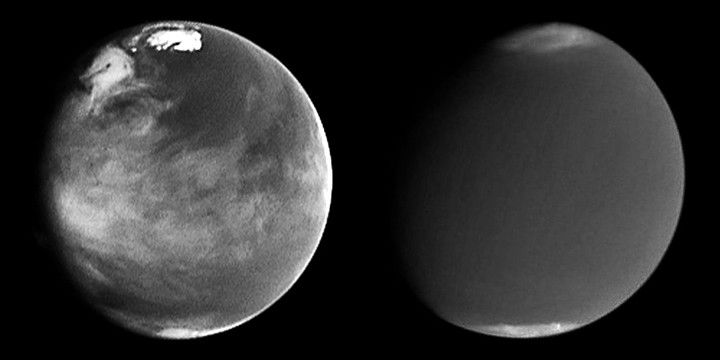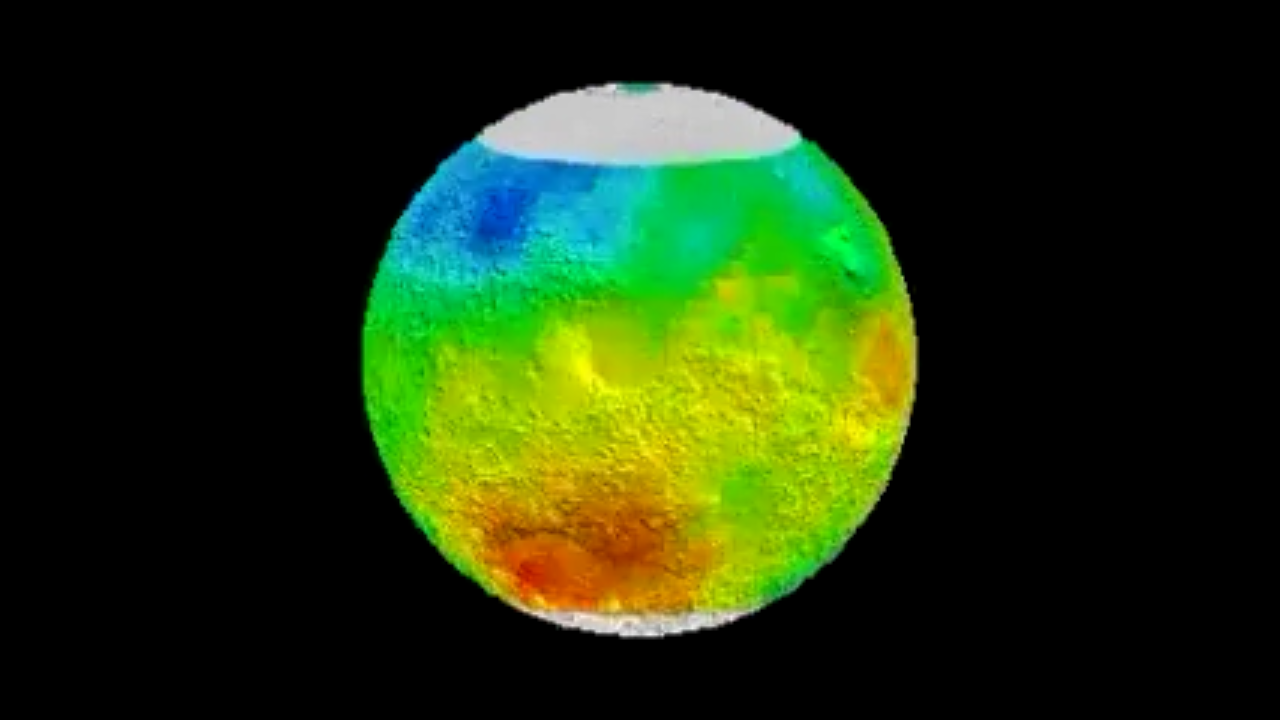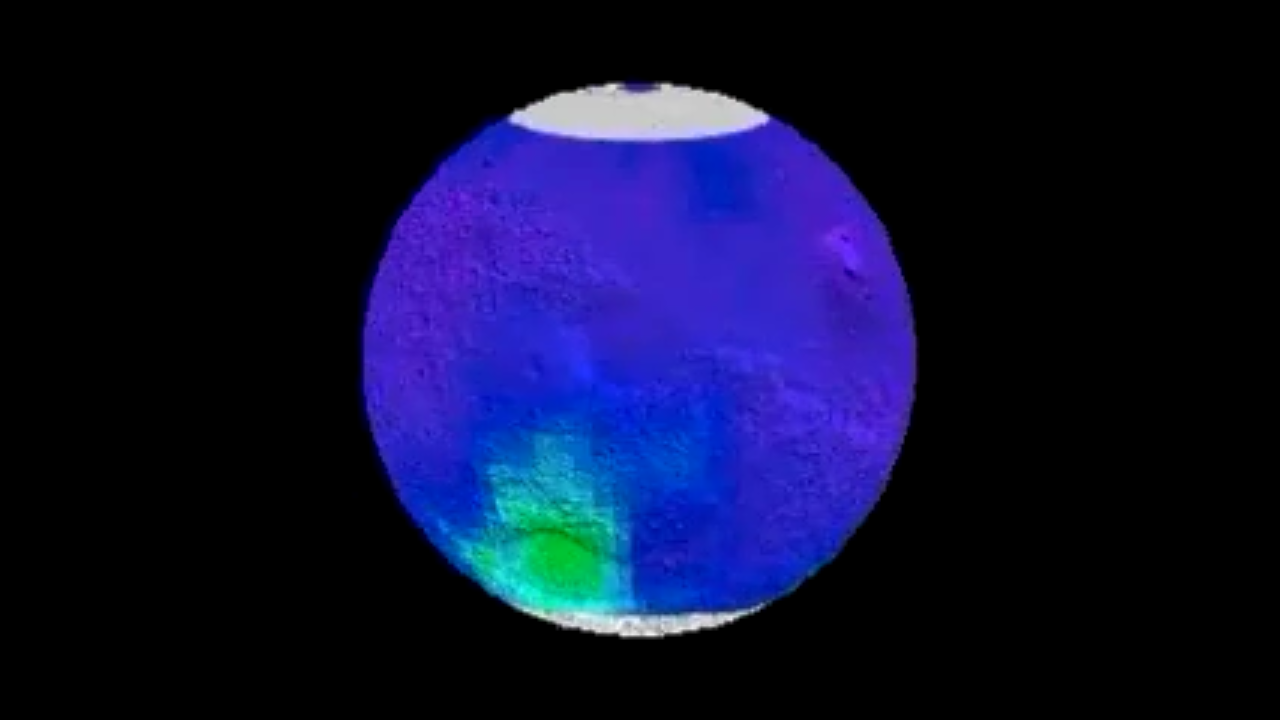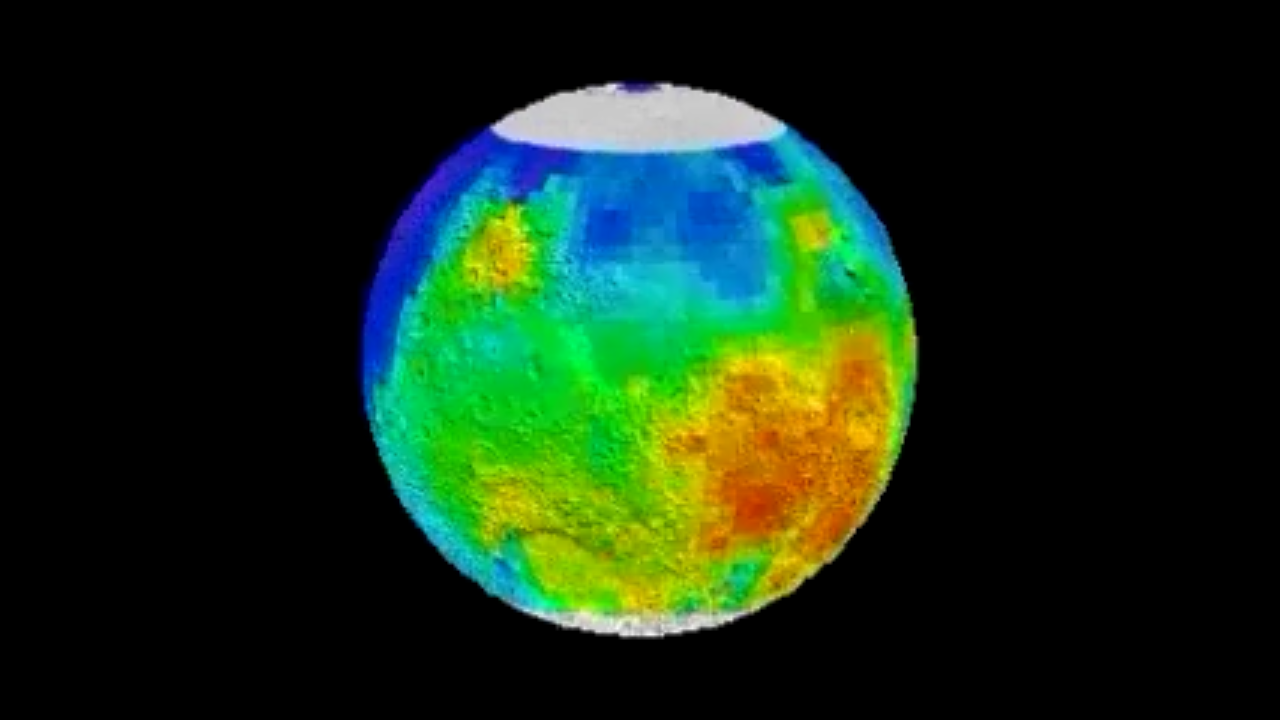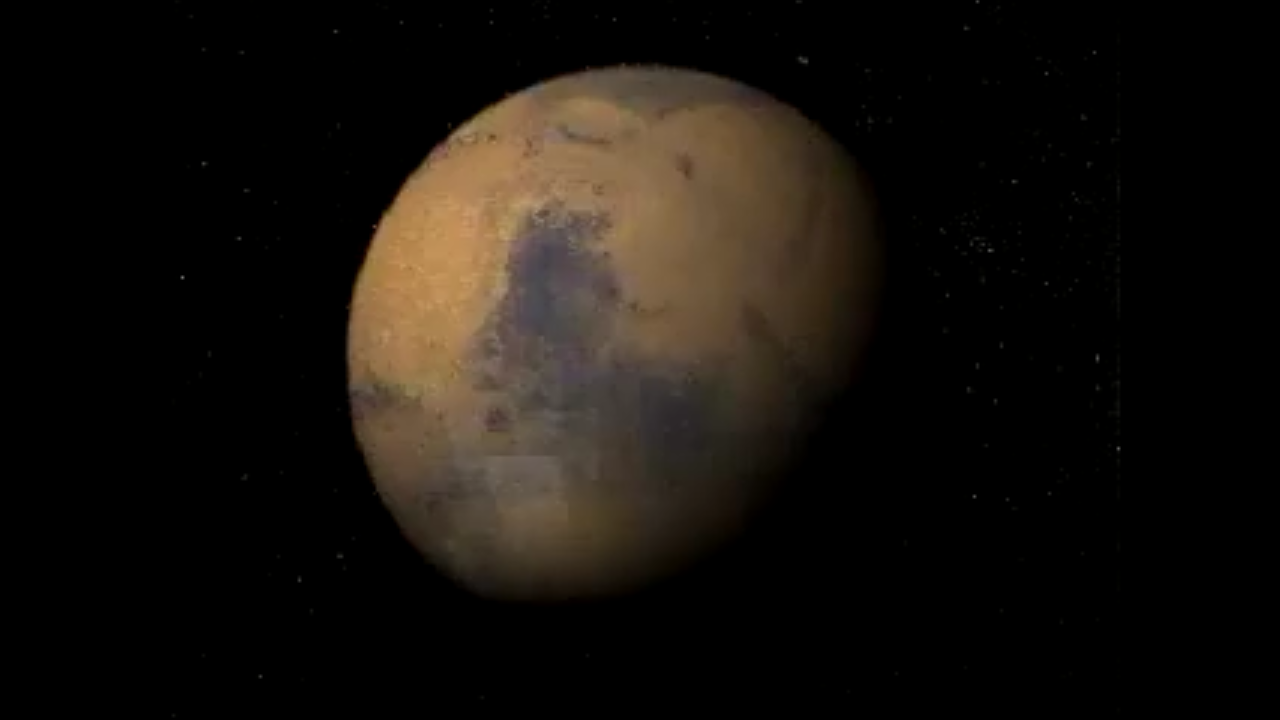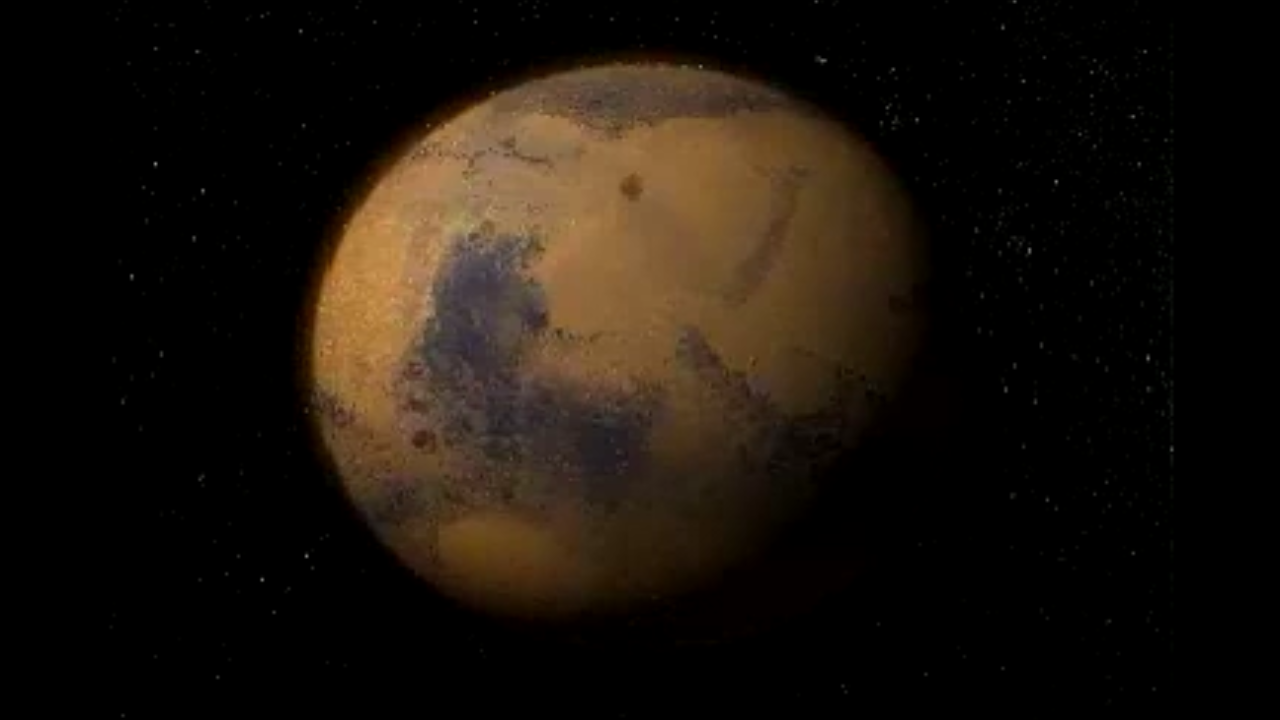A pair of eagle-eyed NASA spacecraft – the Mars Global Surveyor (MGS) and Hubble Space Telescope – are giving amazed astronomers scientists a ringside seat to the biggest global dust storm seen on Mars in several decades.
The Martian dust storm, larger by far than any seen on Earth, has raised a cloud of dust that has engulfed the entire planet for the past three months. As the Sun warms the airborne dust the upper atmospheric temperature has been raised by about 80 degrees Fahrenheit. This abrupt onset of global warming in Mars' thin atmosphere is happening at the same time as the planet's surface has chilled precipitously under the constant dust shroud.
"This is an opportunity of a lifetime," said Hubble observer James Bell of Cornell University in Ithaca, NY. "We have a phenomenal, unprecedented view from these two spacecraft."
"The beauty of Mars Global Surveyor is that we have almost two Martian years of continuous coverage and this is the first time during the mission that we have seen such a storm," added Richard Zurek of the Jet Propulsion Laboratory in Pasadena, CA.
This storm is being closely watched by the team operating NASA's 2001 Mars Odyssey spacecraft, which is heading toward a rendezvous with the Red Planet later this month. The Odyssey team plans to "toe-dip" its way into the Martian atmosphere, gradually deepening its pass through the atmosphere until the desired drag levels are found. A warm atmosphere "puffs up," creating more drag on the spacecraft.
The Thermal Emission Spectrometer on the Global Surveyor has been tracking the blooming dust storm by measuring temperature changes that trace the amount and location of dust in the atmosphere. Both Hubble and MGS caught the storm erupting in late June, which was unusually early in the spring of the Martian Northern Hemisphere compared to previous large storms. Hubble doesn't have continuous Mars coverage, but does show the whole planet in a single snapshot and shows the full range of dust activity from sunrise to sunset.
Planetary scientists photograph the entire planet every day using the Global Surveyor's Mars Orbiter Camera. This has allowed them to pinpoint the actual location of places where dust was being raised, and see it migrate and interact with other Martian weather phenomena and surface topography. This has also provided them an unprecedented, detailed look at how storms start and "blossom" across the orange, arid planet.
"What we have learned is that this is not a single, continuing storm, but rather a planet-wide series of events that were triggered in and around the Hellas Basin," said Mike Malin of Malin Space Science Systems, Inc., San Diego, lead investigator on the camera. "What began as a local event stimulated separate storms many thousands of kilometers away. We saw the effects propagate very rapidly across the equator – something quite unheard of in previous experience – and move with the Southern Hemisphere jet stream to the east."
"By the time the first tendrils of dust injected into the stratosphere by the initial events circumnavigated the Southern Hemisphere, which took about a week, separate storms were raging in three main centers. The most intriguing observation is that the regional storm in Claritas/Syria has been active every day since the end of the first week of July," said Malin.
After three months, the storm is beginning to wane. The planet's shrouded surface has cooled, and this allowed the winds to die down and the fine dust to begin settling. However, Mars is approaching the closest point of its orbit to the Sun. Once the atmosphere begins to clear, the return of unfiltered solar radiation may trigger additional high winds and kick up the dust all over again. This one-two punch has been seen in previous Mars storms for centuries.
"Understanding global dust storms, such as that which we have witnessed this year, is a vital part of the science goals of the Mars Exploration Program," said James Garvin, NASA's lead scientist for Mars exploration, NASA Headquarters, Washington. "Such extreme climate events could potentially provide clues to how climate changes operate on Mars, now and in the past, and provide linkages to the record of sediments on the planet."
The Space Telescope Science Institute (STScI) is operated by the Association of Universities for Research in Astronomy, Inc. (AURA), for NASA, under contract with the Goddard Space Flight Center, Greenbelt, MD. The Hubble Space Telescope is a project of international cooperation between NASA and the European Space Agency (ESA). The Mars Global Surveyor is managed by the Jet Propulsion Laboratory, a division of the California Institute of Technology, for NASA's Office of Space Science, Washington, D.C.
TECHNICAL FACTS ABOUT THIS RELEASE:Principal Astronomers:
Jun 01: J. Bell (Cornell U.), P. James (U. Toledo), M. Wolff (Space Science Institute), A. Lubenow (STScI), J. Neubert (MIT/Cornell), K. Noll, H. Bond, C. Christian, S. Crawshaw, L. Frattare, F. Hamilton, J. Lee, Z. Levay, T. Royle (Hubble Heritage Team/STScI)
Aug-Sep 01: J. Bell (Cornell U.), M. Wolff (Space Science Institute), R. Morris (JSFC)
About the HST Data:
Instrument: HST/WFPC2
Exposure Dates: June 26, 2001, August 9, August 10, August 14, and September 4, 2001
Filters/Wavelengths:
Jun 01: 410nm, 502nm, 588nm, 631nm, 673nm, 1042nm
Aug-Sep 01: 255nm, 336nm, 410nm, 502nm, 547nm, 588nm, 631nm, 673nm, 680nm, 868nm, 953nm, 1042nm.
About the TES Data:
Instrument: Mars Global Surveyor (MGS) — Thermal Emission Spectrograph (TES)
Exposure Dates: June 17 - August 26, 2001
Filters/Wavelengths: Infrared wavelengths: 2.3 - 15.4nm
Principal Scientists: P. Christensen (Arizona State University)
Image Credit: NASA and P. Christensen (Arizona State University)
About the MOC Data:
Instrument: Mars Global Surveyor (MGS) — Mars Orbital Camera (MOC)
Exposure Dates: June 10 - September 24, 2001
Filters/Wavelengths: Wide-angle red: 600 - 630nm; Wide-angle blue: 420 - 450nm
Principal Scientists: M. Malin, B. Cantor and R. Zimdar (Malin Space Science Systems)
Image Credit: NASA/JPL/Malin Space Science Systems
BACKGROUND INFORMATION: HISTORY OF DUST STORMS SEEN ON MARS
Before the advent of Mars orbiting spacecraft, astronomers had a sketchy view of the Red Planet's ever-changing weather. Though Mars is one of the nearest planets to Earth, the distance between it and Earth varies greatly as the two planets circle the Sun like a fast and slow racetrack cars where Earth "laps" Mars approximately every two years. Dust storms are most likely to erupt when it is spring and early summer in the Martian southern hemisphere, a time when Mars is closest in its orbit to the Sun. (Unlike Earth, Mars has a very elliptical orbit so its distance form the Sun varies more widely and this is a bigger factor in climate variability.) Local dust storms, regional obscurations and discrete "yellow" clouds on Mars have been reported throughout the last century; however, it is the planet-encircling and global dust storms that have captured our attention in the age of spacecraft exploration of Mars.
The emerging discovery of Mars great dust storms:
1796: "yellow clouds" on Mars—as opposed to fleecy whitish water-ice clouds—first noted by astronomer H. Flaugergues.
1920: Patchy yellow clouds observed and photographed at Lowell Observatory, AZ.
1956: Observations of the first suspected globe-encircling dust storm on Mars
1965: The first flyby of Mars, Mariner 4, sends back dust-free photographs of a narrow swath of the planet.
1969: Mariners 6 and 7 fly by Mars to photograph clear and cool atmospheric conditions
1971: The first Mars orbiting spacecraft, Mariner 9, arrives to find the planet already shrouded in dust—the first definitive planet-wide storm ever seen. Tall volcanic peaks poke above the dust, revealing themselves as high mountains rather than circular basins.
1973: Ground-based telescopes detect another planet-encircling storm just one Mars year after the global storm viewed by Mariner 9.
1977: Viking spacecraft watch two major Martian dust storms in succession from Mars orbit and, for the first time, from the surface of Mars.
1982: Viking Lander 1 detects what appears to be another major dust storm, just weeks before the loss of communications ends its nearly 7 year observational record on the surface of another planet.
1994: Ground-based microwave monitoring of Mars atmospheric temperatures indicate a planet-encircling storm in progress, the first such planet-wide storm detected since Viking.
1997: Mars Global Surveyor begins aerobraking at Mars, and finds planet-wide warming events can be produced by even a regional dust storm.
2001: A near-global, unusually early dust storm erupts in a few days, after Hubble Space Telescope makes a Mars opposition photograph showing seasonal dust activity in Hellas and at the North Pole. Unprecedented details of the blossoming storm are followed by the Mars Global Surveyor, which takes daily all-planet images and measures atmospheric temperatures.

